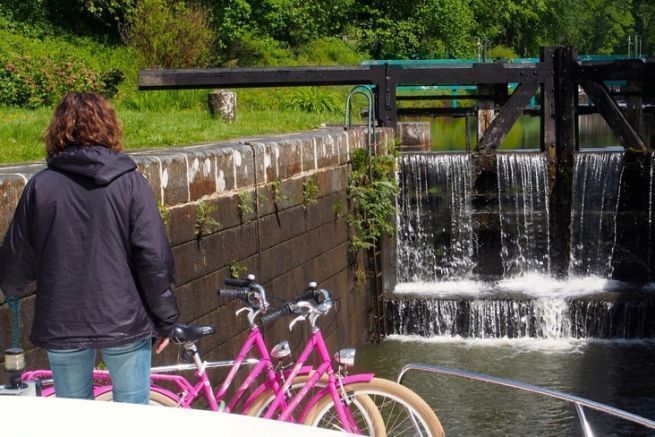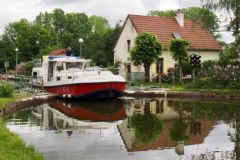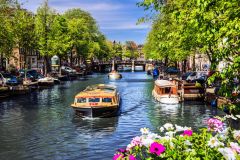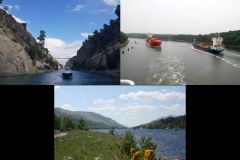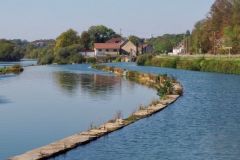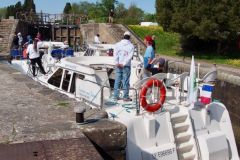Since he understood that floating could reduce his efforts, man has used rivers for transportation. It was necessary for him to bend to the whims of these natural waterways which follow a more or less strong slope according to the local geography. In addition, there were the hazards of seasonal water level variations: high water in winter and low water in summer. Navigation was only possible in the middle of the season and often only in one direction. On the Dordogne River, for example, the gabares were built to last only the time of a trip. They went downstream, loaded with merchandise and were dismantled upon arrival and their wood sold as construction material. The boatmen of the olden days also had to deal with the millers who blocked the rivers to create the waterfalls necessary for their mill. In order to let the boats pass, the river had to be unloaded, which made the journey even longer.
Canals, artificial waterways to counteract hazards
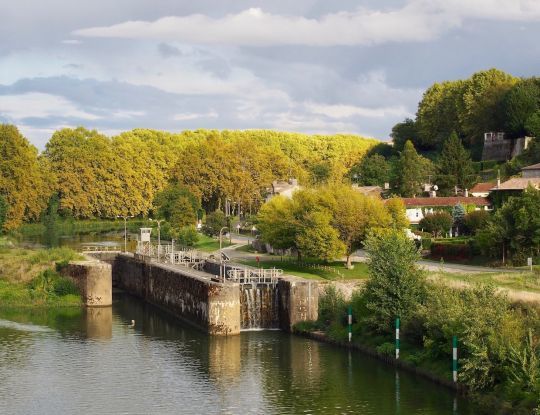
Gradually, rivers were canalized to regulate their flow, that is to say that successive reservoirs were formed, more or less numerous according to the slope. The passage of boats was facilitated by the generalization of the lock with lock chamber. This ingenious invention has no other purpose than to allow a boat to cross a slope by varying the water level in an intermediate basin. The boat can thus pass from one reach to the other without handling or breaking the load. At the same time, the digging of canals began. The first routes logically followed the rivers from which the water needed to feed the canal was drawn. To avoid the dangers and hazards of the great rivers, canals were dug alongside them, such as the Canal latéral à la Loire, or the Canal de la Garonne. These canals have only one slope: all the locks are downstream towards the ocean.
The division of water, on both sides of the relief
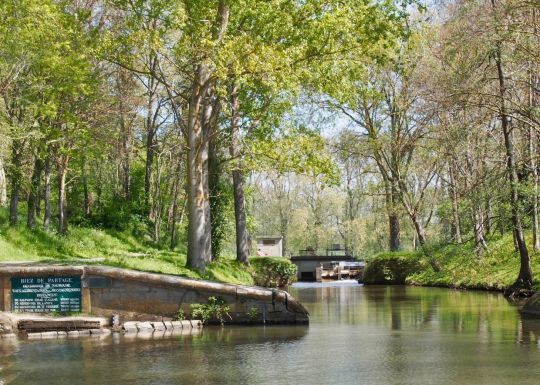
To allow boats to cross the relief, engineers imagined canals with 2 slopes, called "bief de partage". These are in fact two canals that descend on either side of a high point. Of course, the challenge consists in having a sufficient water reserve at the high point, to supply the canal in all seasons.
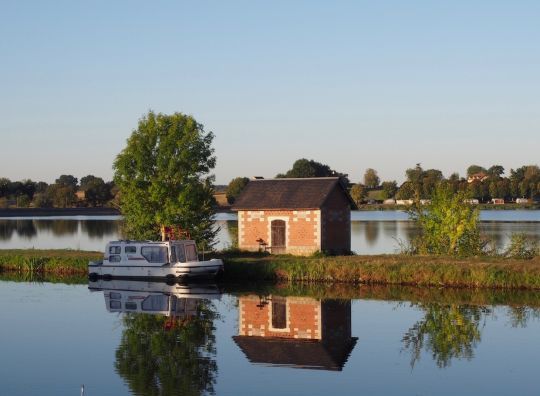
In fact, each lockage maneuver allows approximately 300 m 3 of water, not to mention leakage or evaporation. In France, the first canal of this type was that of Briare, dug from 1605, but one of the most famous remains the Canal du Midi. At the threshold of Naurouze, the "rigole" brings the waters of the Black Mountain to the canal. On either side of the divide, the locks, both descending, bear the names of the Mediterranean and the Ocean respectively.
Bridges and tunnels in all directions
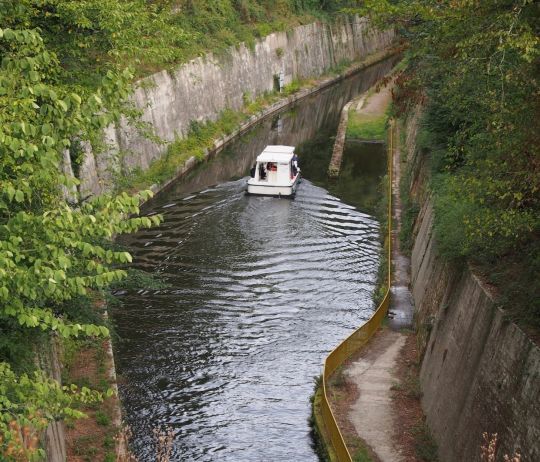
In order for the canal to cross the folds of the terrain, it was thought to supplement the locks with other types of structures. The first is the trench, a deep ditch dug into the hillside at the bottom of which the canal flows.
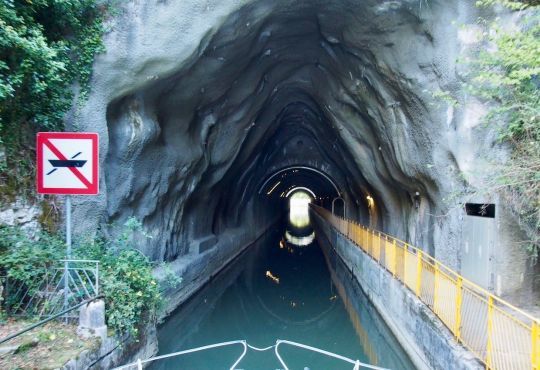
When the relief is more consistent, tunnels have been drilled. The longest in France (5670 m) is at Riqueval in the Aisne. Its length does not allow a good evacuation of the exhaust gases, a towing service was set up: an electric tugboat moves on a submerged chain, towing behind it a train of barges.
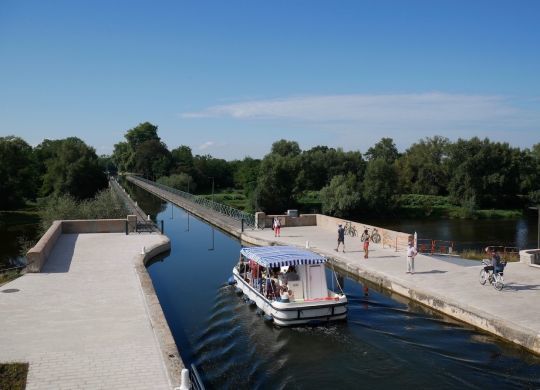
conversely, to allow the canals to cross the valleys, canal bridges were built. These are often very elegant structures, with a sunken roadway, which carry the canal across the rivers. Those of Briare and Digoin, for example, span the Loire and are great moments of navigation.
Elevators to reduce the stress of the locks
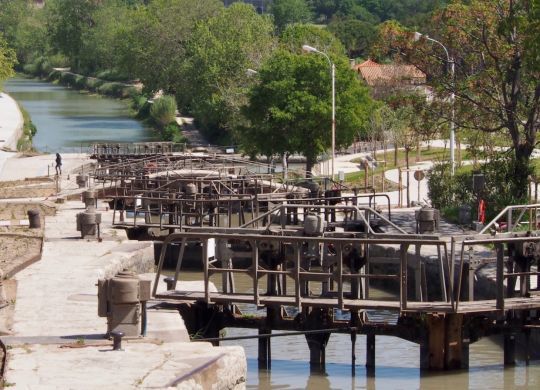
The steeper the slope, the closer the locks are to each other, sometimes forming real chains. At Fonserrannes on the Canal du Midi, 7 locks cascade towards Béziers, while in Brittany, near Pontivy, the Canal de Nantes à Brest has 51 locks in 19 km! To avoid these tedious passages, some have been doubled by machinery. Water slopes as in Montech (Tarn-et-Garonne) where 2 locomotives pushed a watertight door or an inclined plane as in Arzviller in Alsace. This one crosses a 45 meters slope in 4 minutes and replaces a ladder of 17 locks which took a whole day.

As we can see, the relief directly conditions the number and type of structures necessary to cross it. These achievements are now tourist curiosities. They make the salt of river navigation for those who take the trouble to salute the inventive treasures of the engineers who have put their science and their passion at the service of a single cause: to allow boats to cross mountains!
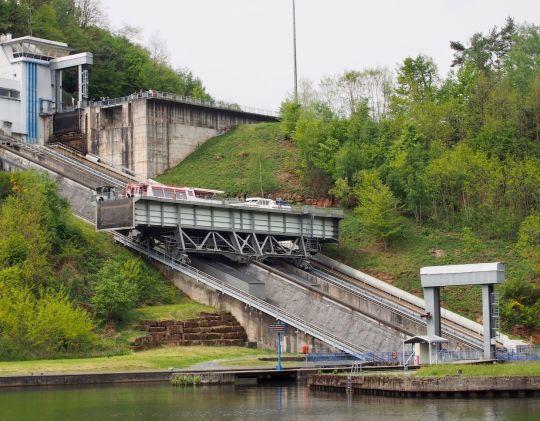

 /
/ 